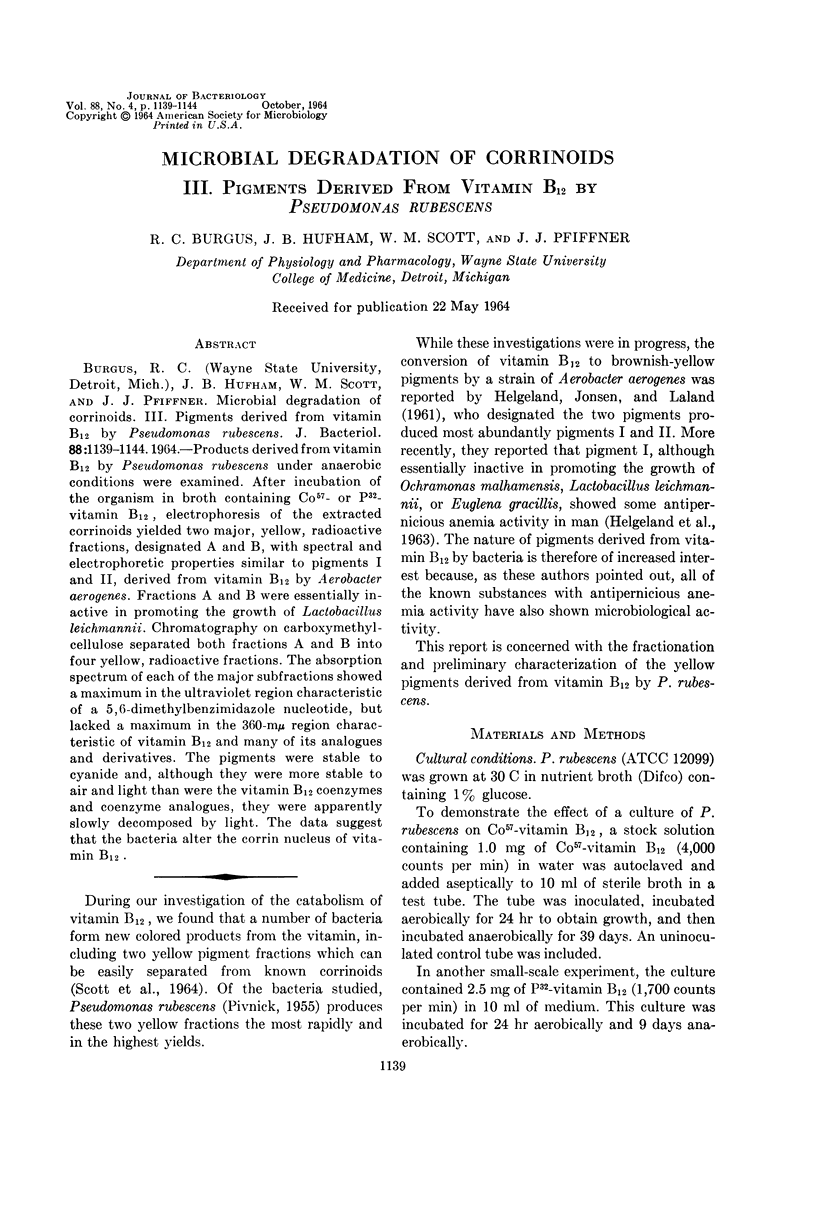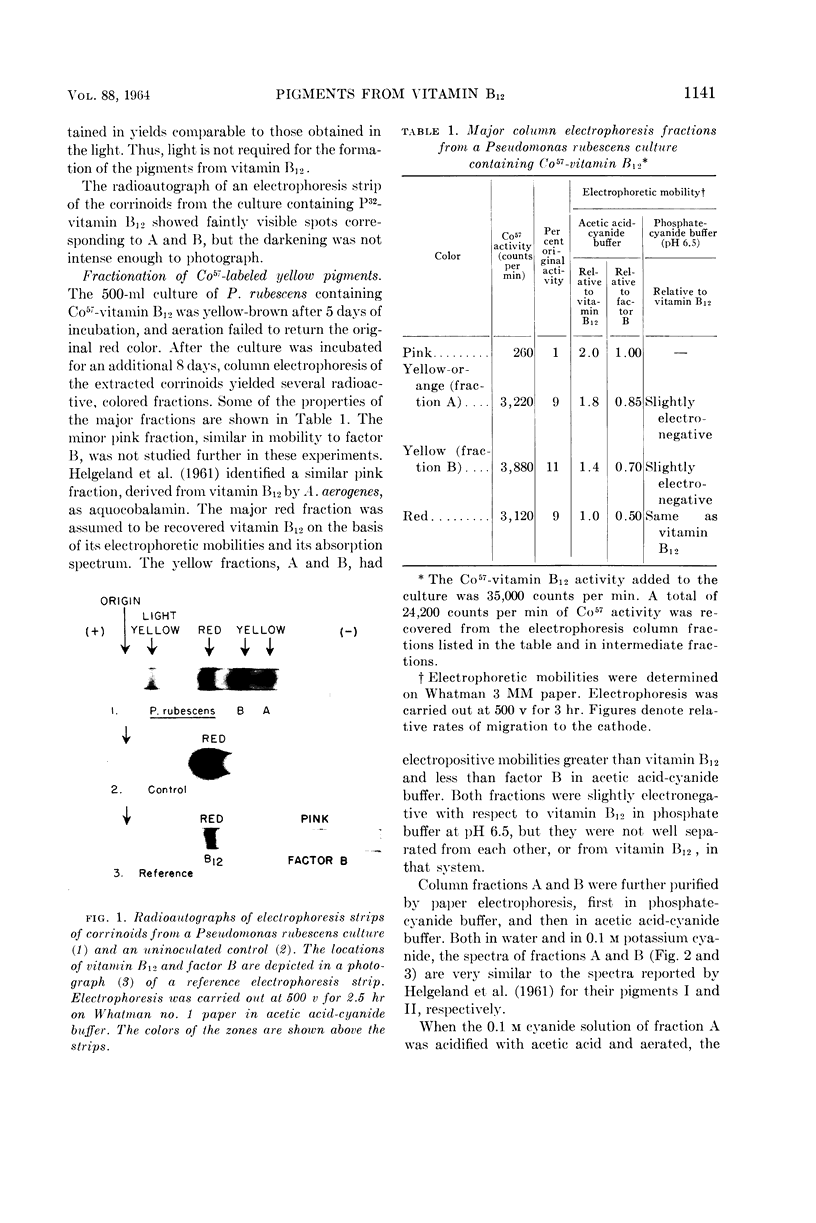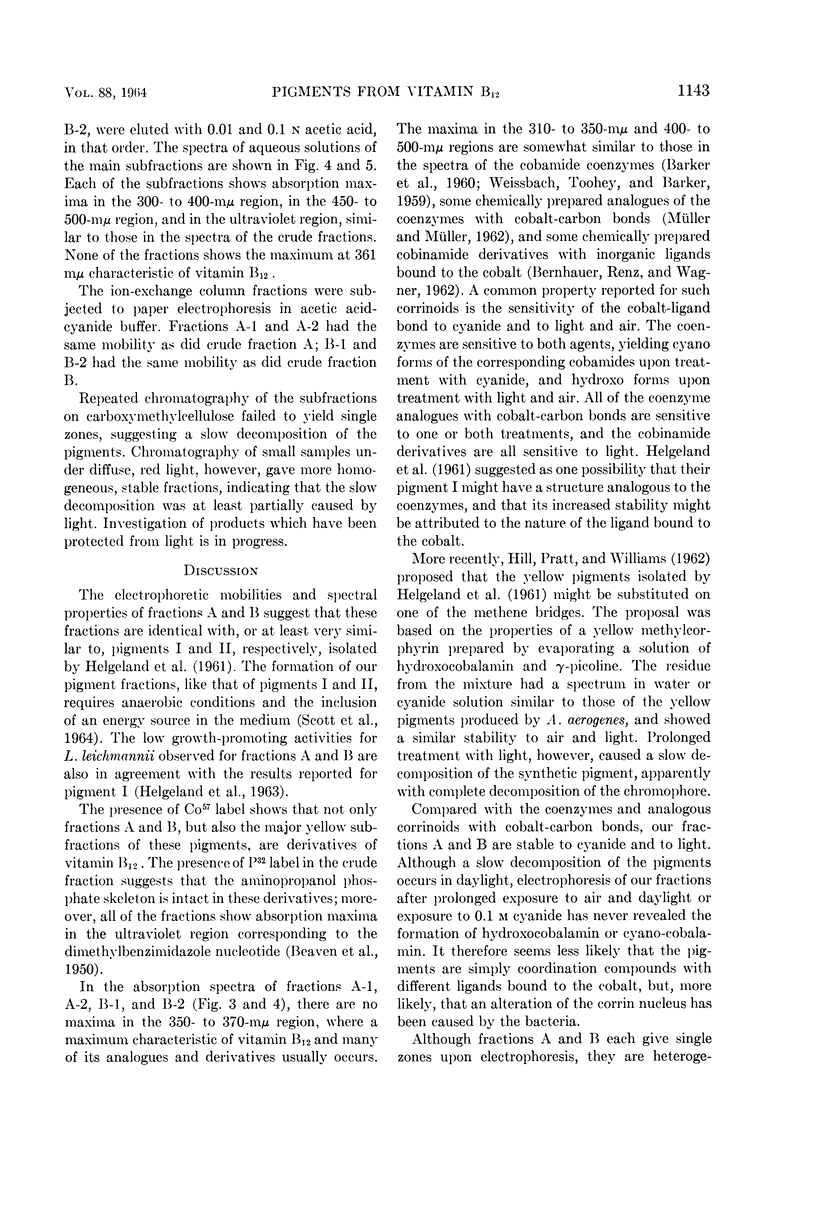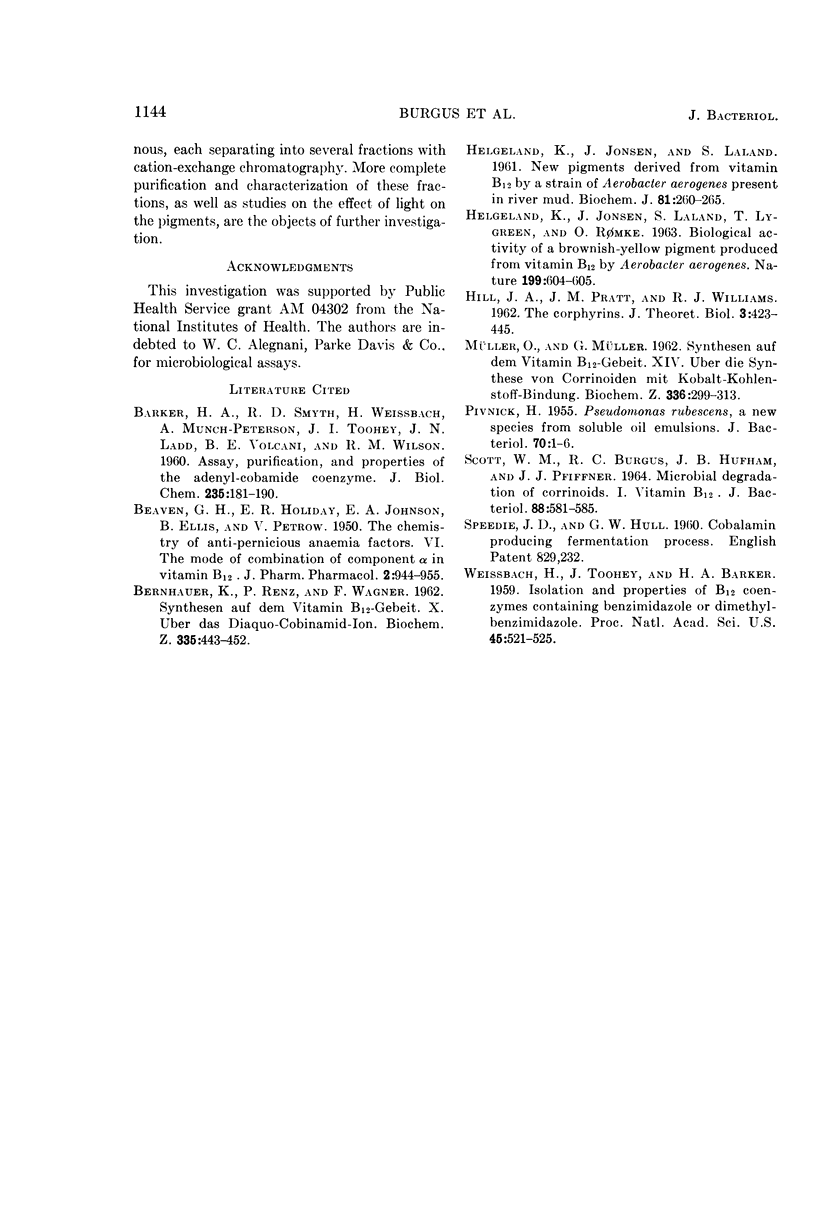Abstract
Burgus, R. C. (Wayne State University, Detroit, Mich.), J. B. Hufham, W. M. Scott, and J. J. Pfiffner. Microbial degradation of corrinoids. III. Pigments derived from vitamin B12 by Pseudomonas rubescens. J. Bacteriol. 88:1139–1144. 1964.—Products derived from vitamin B12 by Pseudomonas rubescens under anaerobic conditions were examined. After incubation of the organism in broth containing Co57- or P32- vitamin B12, electrophoresis of the extracted corrinoids yielded two major, yellow, radioactive fractions, designated A and B, with spectral and electrophoretic properties similar to pigments I and II, derived from vitamin B12 by Aerobacter aerogenes. Fractions A and B were essentially inactive in promoting the growth of Lactobacillus leichmannii. Chromatography on carboxymethylcellulose separated both fractions A and B into four yellow, radioactive fractions. The absorption spectrum of each of the major subfractions showed a maximum in the ultraviolet region characteristic of a 5,6-dimethylbenzimidazole nucleotide, but lacked a maximum in the 360-mμ region characteristic of vitamin B12 and many of its analogues and derivatives. The pigments were stable to cyanide and, although they were more stable to air and light than were the vitamin B12 coenzymes and coenzyme analogues, they were apparently slowly decomposed by light. The data suggest that the bacteria alter the corrin nucleus of vitamin B12.
Full text
PDF





Images in this article
Selected References
These references are in PubMed. This may not be the complete list of references from this article.
- BARKER H. A., SMYTH R. D., WEISSBACH H., MUNCH-PETERSEN A., TOOHEY J. I., LADD J. N., VOLCANI B. E., WILSON R. M. Assay, purification, and properties of the adenylocobamide coenzyme. J Biol Chem. 1960 Jan;235:181–190. [PubMed] [Google Scholar]
- BEAVEN G. H., HOLIDAY E. R., JOHNSON E. A., ELLIS B., PETROW V. The chemistry of anti-pernicious anaemia factors. Part VI. The mode of combination of component alpha in vitamin B12. J Pharm Pharmacol. 1950 Dec;2(12):944–955. doi: 10.1111/j.2042-7158.1950.tb13015.x. [DOI] [PubMed] [Google Scholar]
- BERNHAUER K., RENZ P., WAGNER F. [Syntheses in the field of vitamin B 12. X. On the diacyano cobinamide ion]. Biochem Z. 1962;335:443–452. [PubMed] [Google Scholar]
- HELGELAND K., JONSEN J., LALAND S., LYGREN T., ROMCKE O. BIOLOGICAL ACTIVITY OF A BROWNISH-YELLOW PIGMENT PRODUCED FROM VITAMIN B 12 BY AEROBACTER AEROGENES. Nature. 1963 Aug 10;199:604–605. doi: 10.1038/199604a0. [DOI] [PubMed] [Google Scholar]
- HELGELAND K., JONSEN J., LALAND S. New pigments derived from vitamin B12 by a strain of Aerobacter aerogenes present in river mud. Biochem J. 1961 Nov;81:260–265. doi: 10.1042/bj0810260. [DOI] [PMC free article] [PubMed] [Google Scholar]
- PIVNICK H. Pseudomonas rubescens, a new species from soluble oil emulsions. J Bacteriol. 1955 Jul;70(1):1–6. doi: 10.1128/jb.70.1.1-6.1955. [DOI] [PMC free article] [PubMed] [Google Scholar]
- SCOTT W. M., BURGUS R. C., HUFHAM J. B., PFIFFNER J. J. MICROBIAL DEGRADATION OF CORRINOIDS. I. VITAMIN B12. J Bacteriol. 1964 Sep;88:581–585. doi: 10.1128/jb.88.3.581-585.1964. [DOI] [PMC free article] [PubMed] [Google Scholar]
- Weissbach H., Toohey J., Barker H. A. ISOLATION AND PROPERTIES OF B(12) COENZYMES CONTAINING BENZIMIDAZOLE OR DIMETHYLBENZIMIDAZOLE. Proc Natl Acad Sci U S A. 1959 Apr;45(4):521–525. doi: 10.1073/pnas.45.4.521. [DOI] [PMC free article] [PubMed] [Google Scholar]



